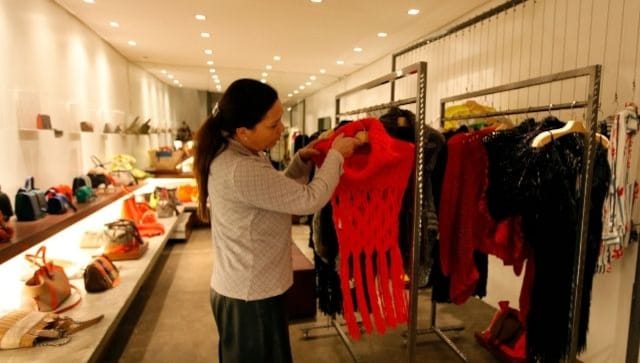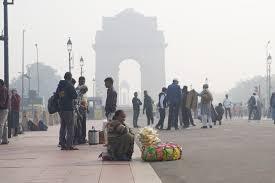For India, tradition and heritage play much into the global experience of sustainable fashion.

From not shopping for new clothes to effecting policy changes to reforming shopping experiences: sustainability can mean taking various conscious decisions in order that our wardrobes make every fashion and every piece of fabric count.
In arriving at a pragmatic definition of sustainability, a panel discussion hosted on 3 September on Fashion and Design Innovations in a Conscious Age, shared a much-needed insider’s perspective on how the fashion industry can be conscious and critical of its design practices.
The fashion world has garnered a dark reputation for being the second most polluting industry in the world, responsible for 10 percent of global gas emissions. And apart from textiles, washing solvents and dyeing industries contribute to as much as one fifth of the overall water pollution. Inevitably, the need for advocating sustainable fashion and consumer habits has been the centre of multiple conversations in the business.
Brought forth by AVID Learning as part of its ongoing Sustainability NOW series, in collaboration with the Chhatrapati Shivaji Maharaj Vastu Sangrahayalya, the live online discussion hosted three figures within the Indian fashion industry to discuss these complex questions and unpack buzzwords around sustainability: recycling, upcycling and circularity to analyse their workability.
Designers and sustainability
Moderating the panel discussion, fashion journalist and author Sujata Assomull quizzed the speakers on how designers can navigate this minefield to adopt sustainable fashion models.
Emphasising the significance of measures like re-educating the industry, swapping fabrics, changing dyeing methods and business models, stylist and creative consultant Ekta Rajani pointed out, “One of the key issues around the challenges of being sustainable is the speed of producing new things.”
She stressed on the need to ‘not stick to the calendar’ and separating from the western ideal of seasons and dates to create designs and clothing at a slower, more enduring pace while discovering the business model that works best for a particular brand. “It is not a ‘one size fits all’ phenomenon.”
Among the panelists was Vaishali Shadangule, founder and creative director of the popular label Vaishali S, who affirmed that it is possible for a brand to be as much as 80 to 90 percent sustainable. This means involving and educating weavers and artisans, who are a crucial part of the system. The designer, whose collections have extensively showcased handloom silhouettes and textiles, suggested we should rather go back to our roots to discover sustainable methods instead of following the West.
Additionally, it is important for designers to discover what their brand’s story stands for, what they want sustainability to do, remarked the third panelist Darshana Gajare, Lead Sustainable Fashion Initiatives at IMG Reliance. Emphasising this concept, she observed that certain brands focus on specific goals like fair trade and organic cotton to ensure the survival of the Indian farmer.
Gajare, who has been working on sustainability campaigns with Lakmé Fashion Week and the Circular Design Challenge among others, also noted that certain brands strive to upcycle their entire post-production or post-consumer waste.
Circularity in fashion, she maintained, thus means taking a holistic look at production, a ‘post-graduate degree’ in sustainability.
While recycling is an afterthought, circularity is a closed loop which denotes that there is a plan for the input material right at the inception, before the garment is sold or reaches the end of its life cycle.
Moving the discussion towards the issue of the supply chain comprising weavers, designers and the end consumer — and its relatively recent mention in fashion media — Assomull rued, “We only started using the word ‘supply’ in our writing maybe seven or eight years ago.”
In answering the moderator’s question on the importance of the relationship between the creator and the craftsmen in order to have a thriving supply chain, Shadangule said, “It’s very important to be fair with them to build that relationship, spend time with them, understand their lifestyle, how they work, and what they need.”
To create her mesmerising collections, the designer has worked with nearly 900 weavers and 14 different weaving techniques. She therefore emphasised the need to build a rapport with the weavers and artisans, give them a fair price for their labour and more importantly, respect their long traditions and rules, and gradually suggest design inputs for them to work with.
For India, tradition and heritage play much into the global experience of sustainable fashion. As Rajani pointed out, “While the West will look at sustainability in terms of scale, process and supply chain, I think India and a lot of Southeast Asian countries have a very different demographic on the ground.” She suggested that the country has a large population of artisans, so in addition to being culture proud, the arts and crafts meet a hungry market, keep age-old traditions alive, create jobs and make space for a sustainability suitable to our turf.
Shoppers and sustainability
According to a report in The Wall Street Journal, the world’s population acquires nearly 80 billion apparel items annually. As Assomull rightly pointed out, “We have been drowning the world in clothes.”
So how can consumers recycle and upcycle in a practical way, conscious of their fashion footprint?
Rajani explained, “I think it starts with how we consume and for a very long time we have been conditioned to believe – especially in the last decade – that we shouldn’t repeat [outfits].”
We have all been in the grip of social media, are all guilty of the #OOTD (Outfit Of The Day) phenomenon but to overcome that, she explained, it is first necessary to be aware of the situation and then find alternatives: conversation and information along with figuring out whether this is a shift in value system one really wants to do. It may not be a choice for everyone, she concedes.
On reiterating the concept of ‘shopping from your wardrobe,’ she illustrated her tryst with a jacket made out of leftover fabric which she has worn and been photographed in multiple times.
For her part, Shadangule emphasised on the need for designers to create meaningful, beautiful garments, provide proper client services and actually make designs that consumers would want to pay for.
In taking a question from the audience following the discussion, Gajare addressed the issue of sustainable or slow fashion and affordability, opining that luxury comes at a price and that in comparing a medium-priced garment to one produced in the sustainable model, it is important to understand consumer psyche. She drove home the idea that it is difficult to make a product sustainably while adhering to the entire supply chain and then fitting it into the pricing of fast fashion.
It is only in these last few years that the fast fashion model has emerged, which has led to the worry of whether artisans are going to find work, she remarked, “So there needs to be a change in the consumer mindset as well.”
Re-educating the customer is crucial in changing buying patterns towards more sustainable garments, so that shoppers are familiar with the work of weavers or handloom artisans, who laboriously create beautiful pathani or chanderi patterns, which consumers might be looking for. Rajani pointed out that if apps like GoodOnYou – which map the supply chain of a product – were to come to India, the industry would have an ethical rating system engaging consumers to make sustainable choices.
Read Also : The U.S. Chicken Industry Must Stop Boiling Birds Alive,https://www.firstpost.com/living/decoding-sustainable-fashion-shift-to-slow-design-models-change-in-consumer-mindset-imperative-say-experts-8796831.html
Through the conversation, the panelists stressed that with re-labelling and a shift in manufacturing methodology, clothes have the potential to become wearable art. Fashion will cease to be reduced to impulse shopping, making everything in the wardrobe a conscious choice which follows trends not dominated by the West, but the sustainability patterns indicated by Indian forecasts.









I got what you intend, appreciate it for putting up.Woh I am glad to find this website through google.